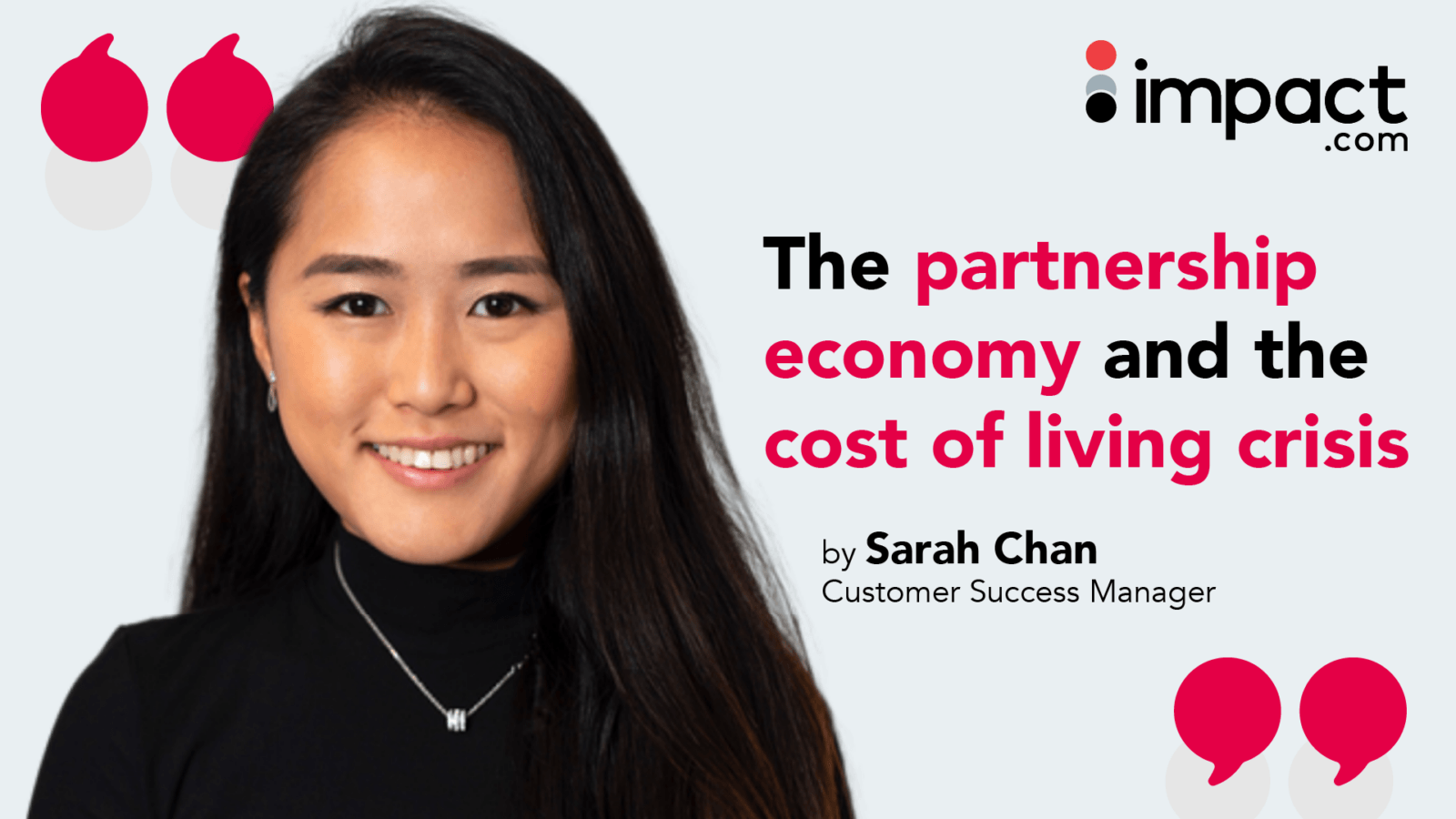THE PARTNERSHIP ECONOMY AND THE COST OF LIVING CRISIS

With inflation on the up, energy bills soaring and a recession in the offing, brands and consumers are faced with a period of financial uncertainty. Sarah Chan, Customer Success Manager at impact.com, tells us how the partnership economy can help navigate these tough times.
The general consensus is the world is heading into a global economic downturn. The UK is already in a recession that is predicted to last into 2023, and TD Securities suggests that in the next 18 months there is a greater than 50% chance that the US will follow suit.
Consumer behaviour is already changing to reflect these financial challenges. People are tightening their belts across the board, putting off larger purchases and reviewing their spending on things like content streaming subscriptions in their search for value and efficiencies. Brands are having to react fast, and in many cases are reshaping their marketing strategies in real-time to manage these difficulties.
It’s an established axiom that reducing marketing spend in a time of recession is not conducive to long-term success, but businesses do need to look at how to make budgets work harder. Part of that is about spending money in the right channels to efficiently and effectively engage their audience, and partnership marketing is proving particularly successful in performing this function.
The partnership economy has experienced significant growth in recent years, as brands come to realise the power and potential partnerships hold. There are all kinds of partnerships, from traditional affiliates, right through to social media influencers and commerce content publishers, and a one-stop platform allows brands to build, manage and measure an ecosystem of partnerships with speed and simplicity.
It’s All About Value
In tight times, value is reflected from both product and brand value perspectives. In terms of product, it’s about aligning a partnership strategy that will prioritise and drive the products, promotions and packaged deals that offer maximum value for your customers.
From a brand value perspective, the emphasis is on understanding your audience, their pinch points and concerns, and subsequently aligning your values and brand messages with those of your consumers. The partnership economy offers an unparalleled opportunity to speak directly to an audience in an authentic, transparent, empathetic way, and build long-term relationships. The truth is that advertising as we know it is dead. The rise of digital media in the 1990s started this protracted process, but even programmatic advertising (once the industry saviour) has become convoluted and obscure. This, combined with consumer ad blindness and concerns surrounding privacy, has caused brands to turn towards partnerships to build trust with their audience.
Omnichannel Approach
Spreading your marketing activities across a range of channels will give you the best chance of providing your customers with additional value and courting their loyalty – especially if that inter-channel experience is seamless. The partnership economy can play a critical role in your multi-channel approach and allows you to track your customers’ journeys and provide high-value insights into their behaviour.
As you experiment with a variety of partnerships to see which works best for your company and customers, you will gain a holistic appreciation of how your multichannel activities are performing. This is carried out via a range of web and mobile integrations, combined with offline tracking such as QR codes or card-linked offers (with the latter, specific rewards are earned by using an agreed payment provider at the point of sale). This allows you to reward successful partners and double-down on the most productive channels.
Consistency And Currency
The longer the expected downturn continues, the greater the financial pressure on consumers. Their behaviour patterns are changing rapidly, and these are reflected in a number of ways, including an increasing emphasis on sustainable shopping. Many are already purchasing more refurbished goods, for example, and there’s an increasing trend that shows more consumers than ever are buying through social media channels.
Regardless of the channel, consumer sensitivity towards consistent pricing and updated offers will increase, so it’s important to ensure that advertisements and offers are consistent and current. Any outdated ads and links will ruin the customer experience, which is something to avoid, as consumer tolerance for poor ad experience will be tested in these trying times.
Data, Data, Data (And More Data)
As the technological element of digital advertising advances, the amount of data to which marketers have access grows exponentially. But there’s a difference between having access to data and making good use of it. The partnership economy in particular provides advertisers with mountains of consumer behaviour data that can be used to provide in-depth, reliable reporting that will help make informed decisions regarding your partnership strategy.
This data can provide insights as to how many different types of partners it takes to bring a conversion, and what is the incrementality of each partner type, for example. Partners come in all different shapes and sizes across most marketing channels. Using data to discover which works best for your business (in which combinations) is all part of the game.
Internal Efficiencies
As we’ve seen, the theory is that a business that boosts marketing activities can spend its way through a downturn. The practicalities aren’t that simple when cuts are being made further up the organisation. This places extra emphasis on the need to operate efficiently internally, and time should be spent on building strategies.
Manual tasks such as reporting and partner engagement should be carried out using automation, and technology engaged to free your people to plot their path through the cost of living crisis.
Contributor: Sarah Chan, Customer Success Manager at impact.com



